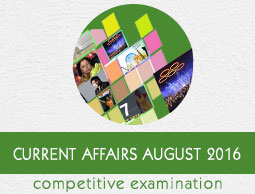
- Appointments
- Awards
- Books & Authors
- Committees
- Deaths
- Defence
- Economic
- Environment
- Finance
- Important Days
- International
- Miscellaneous
- National
- Persons in NEWS
- Places in NEWS
- Regional
- Reports
- Resignations & Retirements
- Science & Technology
- Sports
- August 2016 - Exams Resources
- Current Affairs - Quiz
- Current Affairs - Test
- Current Affairs - PDF
Current Affairs August 2016 - Technology
News 1 - Yahoo researchers built a powerful new online abuse detector

A research team at Yahoo Labs have been able to develop an algorithm that is being considered as one of the best automated abuse filter built to date.
Most automated filters work by detecting certain keywords, phrases, and commonly-used expressions but the Yahoo team used a technique called "word embedding," which processes words as vectors rather than either simply positive or negative which can recognize an offensive string of words, even if the individual words are inoffensive on their own.
News 2 - CSIR-CFTRI develops Nutrice Cream

The Council of Scientific and Industrial Research (CSIR) constituent Laboratory, CSIR-Central Food Technological Research Institute (CSIR-CFTRI) Mysuru, in association with M/s Oleome Biosolutions, Bengaluru and M/s Dairy Classic Ice Creams Pvt. Ltd., has developed Nutrice.
Nutrice cream is an Omega-3 and Vitamin-E enriched frozen nutritional dessert from vegetarian source. Dietary supplementation of Omega-3 (ω-3) fats, which are the Poly Unsaturated Fatty Acids (PUFA), have been reported to have beneficial health functions including brain development in children and good health in elderly population.
News 3 - China launches first mobile telecommunications satellite
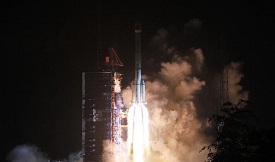
China has launched its first mobile telecommunications satellite. The Tiantong-01 satellite will establish a mobile network serving China, the Middle East, Africa and other areas. The ground service will be operated by China Telecom.
It is the first satellite of China's home-made satellite mobile telecom system, and a key part of the country's space information infrastructure. Tiantong-01 was designed by China Academy of Space Technology.
News 4 - China launched a satellite to get accurate images of earth

China launched a new high-resolution Synthetic Aperture Radar (SAR) imaging satellite, called Gaofen-3, from the Taiyuan Satellite Launch Center in northern Shanxi Province. The launch vehicle for Gaofen-3 was a Long March 4C rocket.
The SAR satellite can capture images that are accurate down to one meter (about three feet) in distance and will operate as an all-weather 24-hour observation platform. It will be used for disaster warning, weather forecasting, water resource assessments, and the protection of maritime rights.
News 5 - Fifth Generation signs pact with Anna University
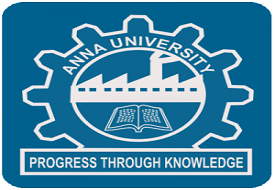
Anna University, Chennai has entered into an agreement with Fifth Generation Technologies, a multi-national research and innovation company with specialization in building real time intelligence solutions and products to the manufacturing industry.
As part of the agreement, Fifth Generation will conduct research to arrive at a useful prediction of the remaining life of critical equipment that are working in high temperature thermal cycles. The research will be conducted at Centre for Technology Development and Transfer (CTDT), set up by Anna University.
News 6 - Novel drug compound inhibiting skin cancer discovered: NCCS Study

A team of scientists at the Pune-based National Centre for Cell Science (NCCS) have been successful in isolating cancer stem cells that cause skin cancer. The study results were published in the Journal of Investigative Dermatology.
They have also been able to demonstrate that a compound (Andrographolide) isolated and purified from a herb (Andrographis paniculata) that is found in India to be effective in inhibiting tumor growth both skin cancer and lung metastasis in mice.
News 7 - BARC develops portable kit for detection of Chromium contamination of water
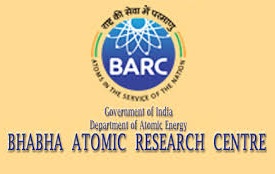
BARC has developed a simple, user friendly, quick and cost effective kit for onsite determination of Hexavalent Chromium Cr (VI), which meets IS10500 as well as EPA criterion. It provides the much needed solution to measure the level of Chromium contamination in drinking water. The procedure involves adding a specified amount of specific reagents to the water sample and identifying the developed color.
The color develops within 5 minutes and the distinction can be made with naked eye. For ease of comparison a color chart is provided with the kit. Water samples can be immediately categorized as being safe or toxic for drinking from Chromium(VI) point of view.
News 8 - Intel unveils merged reality with Project Alloy device

Tech giant Intel has unveiled Project Alloy, a device that creates merged reality. Project Alloy is a headset that uses the RealSense technology enabling people to use their hands to interact with elements of the virtual world. There is no need for cables to connect to the computer.
Merged reality is a new way of experiencing virtual reality and real world together, using cutting-edge technology. One example of merged reality is playing two musical instruments at the same time. It means that person can play a virtual piano with one hand and a cello with the other.
News 9 - Chinese scientists discover molecule to repair organs

A team of scientists from China have discovered a small molecule named XMU-MP-1 that can regenerate tissue. The discovery could potentially make organ transplant much easier in future. The findings were published in Science Translational Medicine.
The drug, XMU-MP-1 can promote repair and regeneration in the liver, intestines and skin. The research was led by professor Zhou Dawang and Deng Xianming of the School of Life Sciences, Xiamen University, and professor Yun Caihong of Peking University.
News 10 - Scientists develop laser from fluorescent jellyfish proteins

Scientists have, for the first time, developed laser from fluorescent jellyfish proteins that were grown in bacteria. The research was published in the journal Science Advances.
These lasers have the potential to be far more efficient and compact than conventional ones and could open up research avenues in quantum physics and optical computing. By repurposing the fluorescent proteins that have revolutionized biomedical imaging, and by allowing scientists to monitor processes inside cells, the team created a polariton laser that operates at room temperature powered by nanosecond pulses - just billionths of a second.
News 11 - China successfully launches world's first quantum satellite
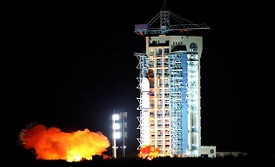
China successfully launched the world's first quantum satellite which boasts of establishing hack-proof communications between space and the ground. It is equipped with security features to prevent wiretapping and intercepts.
The satellite nicknamed "Micius" was launched from the Jiuquan Satellite Launch Centre. Quantum communication boasts of ultra-high security as a quantum photon can neither be separated nor duplicated. It is hence impossible to wiretap, intercept or crack the information transmitted through it.
News 12 - NASA shortlists 6 companies to develop prototypes and concepts for Deep Space Habitats
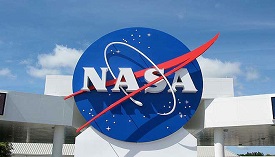
The National Aeronautics and Space Administration (NASA) selected six U.S. companies Bigelow Aerospace, Boeing of Pasadena, Lockheed Martin, Orbital ATK, Sierra Nevada Corporation and NanoRacks of Webster, to develop ground prototypes and safe habitation system. Habitation systems provide a safe place for humans to live as we move beyond Earth on our Journey to Mars.
Through the public-private partnerships enabled by the Next Space Technologies for Exploration Partnerships-2 (NextSTEP-2) Broad Agency Announcement, Appendix A, NASA and industry partners will expand commercial development of space in low-Earth orbit.
News 13 - China launches first Tibetan-language search engine

China has launched its first Tibetan-language search engine, "Yongzin" which means "master" or "teacher" in the Tibetan language. It will serve as a unified portal for all the Tibetan-language websites in China.
The search engine has eight sections for news, websites, images, videos, music, encyclopedia, literature and forums. The project cost was 57 million yuan (about USD 8.7 million). The work began on the project in April 2013.
News 14 - Scientists discovered Earth-sized planet orbiting star nearest to Sun

Scientists have discovered an Earth-sized planet orbiting the star nearest to the Sun. A team of European scientists wrote in the journal Nature that the planet, known as Proxima B, is located just four light-years away from the Earth.
The discovery is potentially a major step in the quest to find out if life exists elsewhere in the universe. Proxima B could be within the habitable zone, where it is neither too hot nor too cold to support life and where temperatures could allow the presence of liquid water.
News 15 - ISRO successfully test-fired Scramjet Rocket Engine from Sriharikota
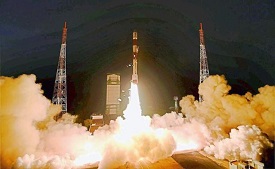
The Indian Space Research Organization ISRO successfully test launched the Supersonic Combustion Ramjet engine, called Scramjet. The first ever experimental mission using the engine on-board the sounding rocket ATV02 has met all the specified goals.
These newly developed engines will use oxygen from the atmosphere and there-by reduce the cost significantly. The rocket carrying Scramjet engines weighed 3277 kg at lift-off. India has joined the select league of four space faring nations that have demonstrated flight testing of Scramjet engines.